Abstract
A fully interfaced clinical information system (CIS) contains physiologic, laboratory, blood gas, medication and other data that can be used as the information base for a comprehensive alerting system. Coupled with an event driven rules engine, a CIS can generate clinical alerts which may both prevent medical errors and assist caregivers in responding to critical events in a timely way. The authors have developed a clinical alerting system which delivers alerts and reminders to clinicians in real time via a alphanumeric display pagers. This paper will describe the system, the type and number of alerts generated, and the impact on clinical practice. A major issue remains in measuring the impact of wireless alerts on patient outcomes.
Full text
PDF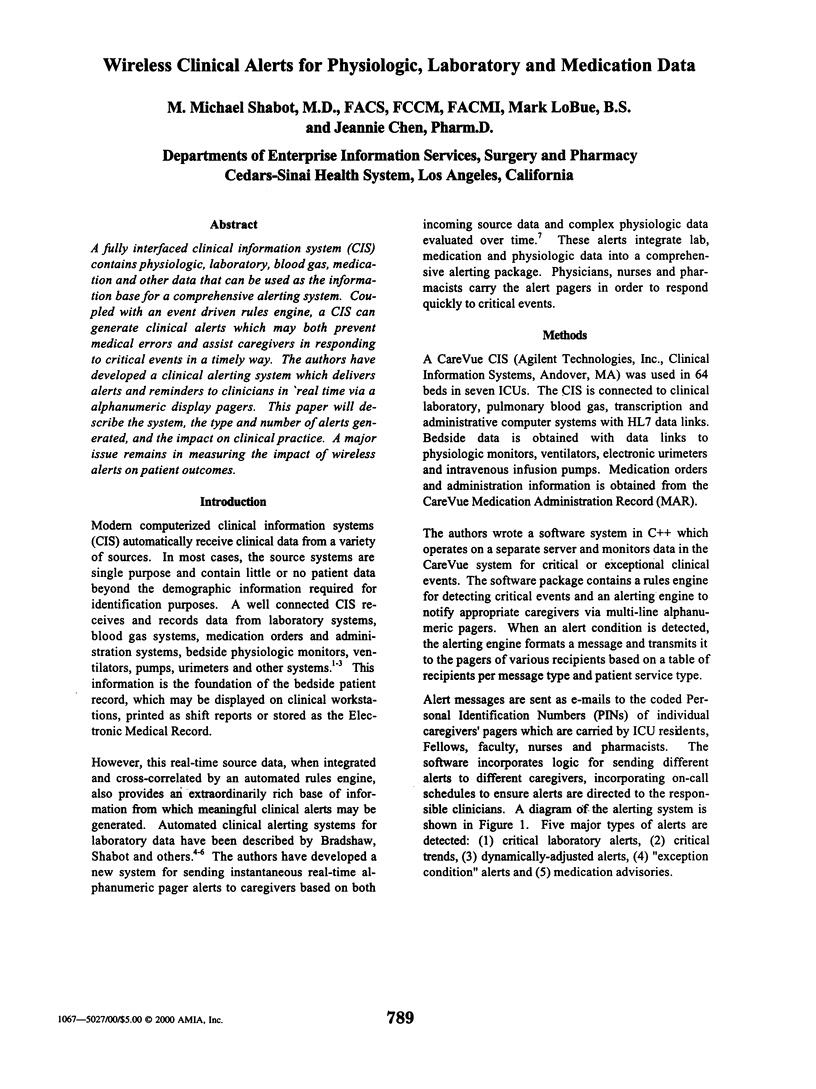
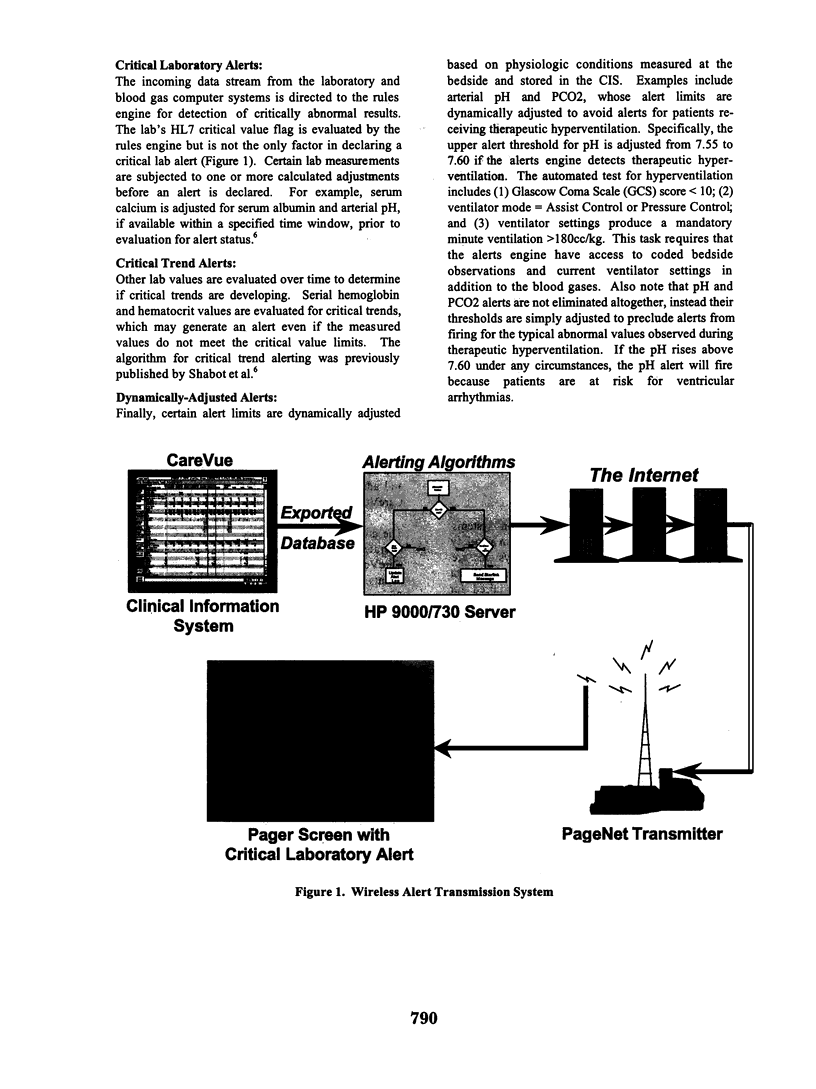
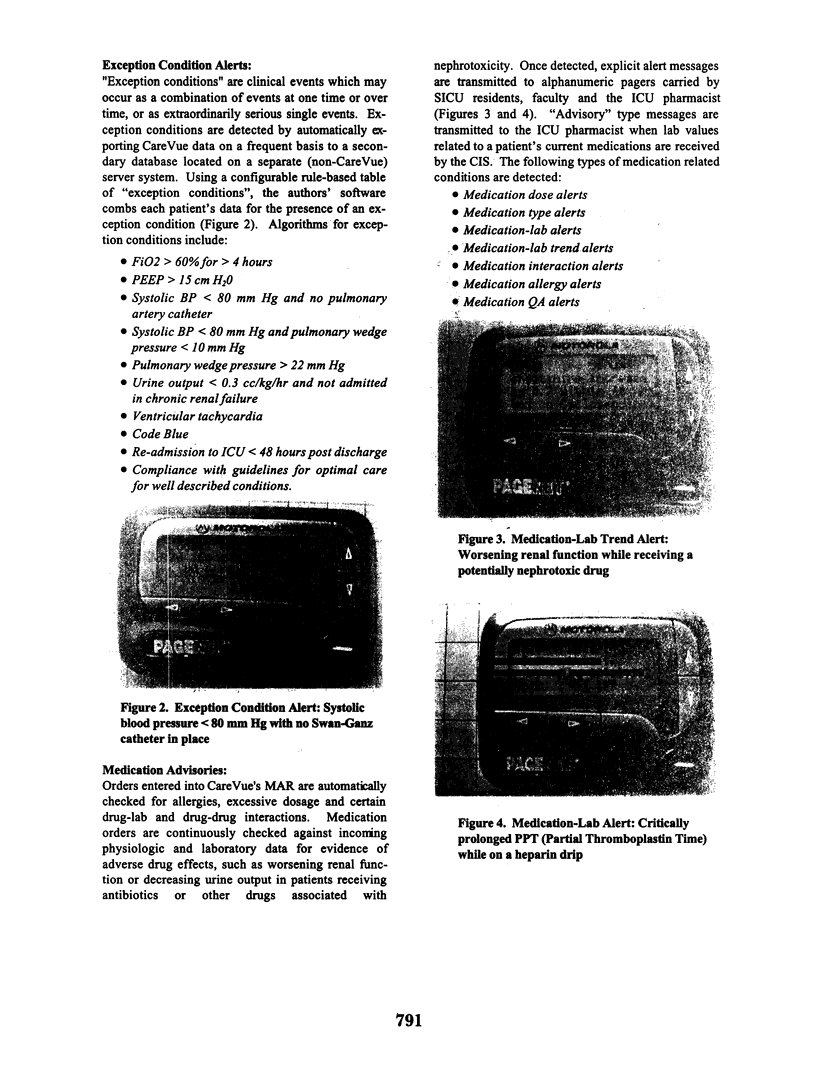
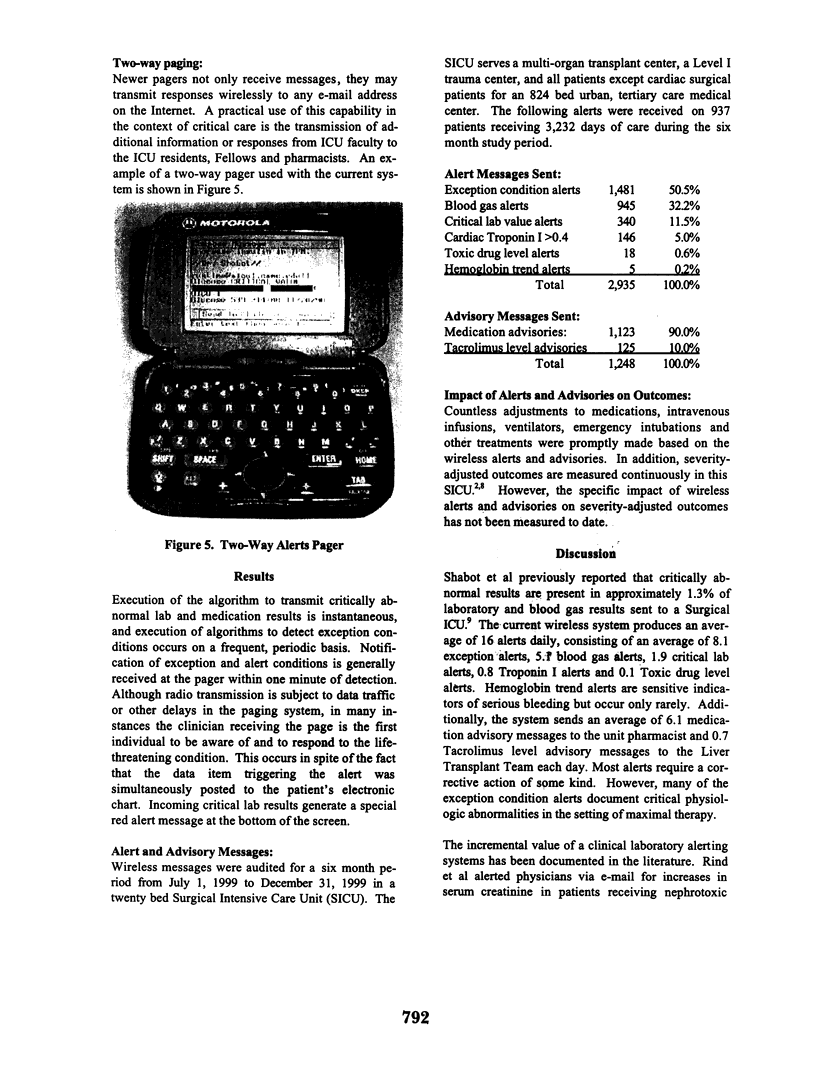
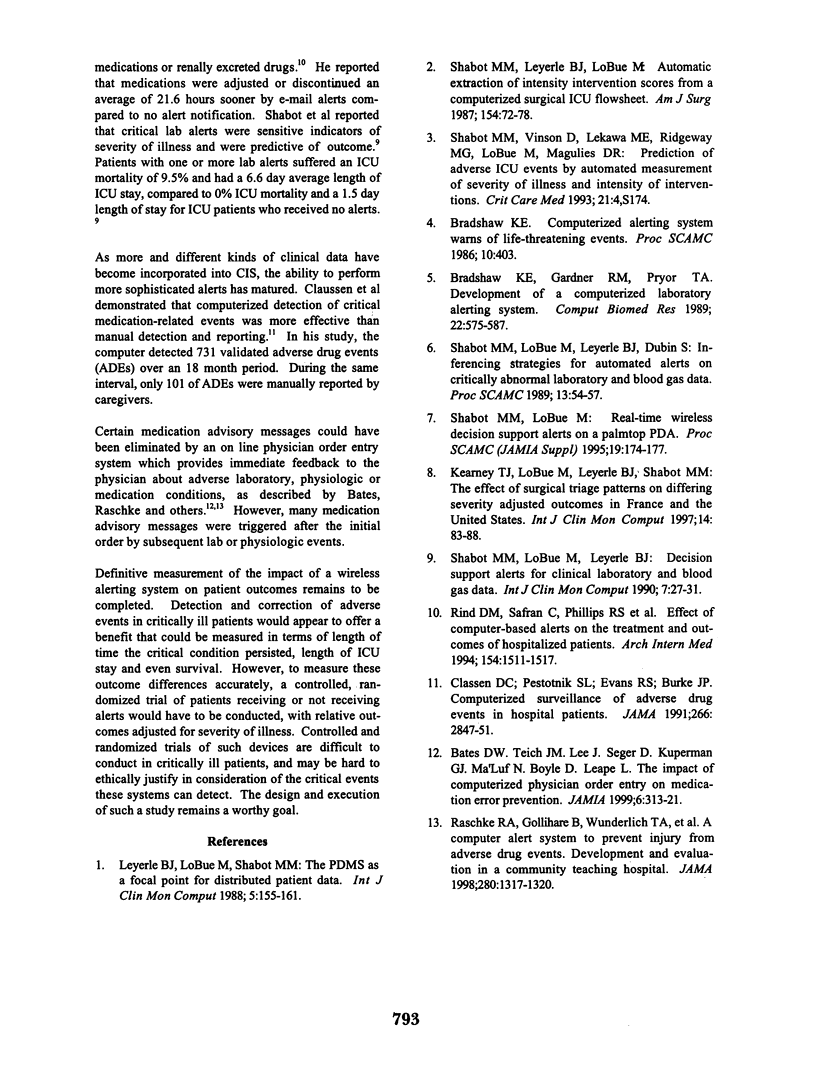
Selected References
These references are in PubMed. This may not be the complete list of references from this article.
- Bates D. W., Teich J. M., Lee J., Seger D., Kuperman G. J., Ma'Luf N., Boyle D., Leape L. The impact of computerized physician order entry on medication error prevention. J Am Med Inform Assoc. 1999 Jul-Aug;6(4):313–321. doi: 10.1136/jamia.1999.00660313. [DOI] [PMC free article] [PubMed] [Google Scholar]
- Bradshaw K. E., Gardner R. M., Pryor T. A. Development of a computerized laboratory alerting system. Comput Biomed Res. 1989 Dec;22(6):575–587. doi: 10.1016/0010-4809(89)90077-3. [DOI] [PubMed] [Google Scholar]
- Classen D. C., Pestotnik S. L., Evans R. S., Burke J. P. Computerized surveillance of adverse drug events in hospital patients. JAMA. 1991 Nov 27;266(20):2847–2851. [PubMed] [Google Scholar]
- Kearney T. J., Shabot M. M., LoBue M., Leyerle B. J. The effect of surgical ICU triage patterns on differing severity adjusted outcomes in France and the United States. Int J Clin Monit Comput. 1997;14(2):83–88. doi: 10.1007/BF03356581. [DOI] [PubMed] [Google Scholar]
- Leyerle B. J., LoBue M., Shabot M. M. The PDMS as a focal point for distributed patient data. Int J Clin Monit Comput. 1988;5(3):155–161. doi: 10.1007/BF02933711. [DOI] [PubMed] [Google Scholar]
- Raschke R. A., Gollihare B., Wunderlich T. A., Guidry J. R., Leibowitz A. I., Peirce J. C., Lemelson L., Heisler M. A., Susong C. A computer alert system to prevent injury from adverse drug events: development and evaluation in a community teaching hospital. JAMA. 1998 Oct 21;280(15):1317–1320. doi: 10.1001/jama.280.15.1317. [DOI] [PubMed] [Google Scholar]
- Rind D. M., Safran C., Phillips R. S., Wang Q., Calkins D. R., Delbanco T. L., Bleich H. L., Slack W. V. Effect of computer-based alerts on the treatment and outcomes of hospitalized patients. Arch Intern Med. 1994 Jul 11;154(13):1511–1517. [PubMed] [Google Scholar]
- Shabot M. M., Leyerle B. J., LoBue M. Automatic extraction of intensity-intervention scores from a computerized surgical intensive care unit flowsheet. Am J Surg. 1987 Jul;154(1):72–78. doi: 10.1016/0002-9610(87)90293-5. [DOI] [PubMed] [Google Scholar]
- Shabot M. M., LoBue M., Leyerle B. J., Dubin S. B. Decision support alerts for clinical laboratory and blood gas data. Int J Clin Monit Comput. 1990 Jan;7(1):27–31. doi: 10.1007/BF02915529. [DOI] [PubMed] [Google Scholar]
- Shabot M. M., LoBue M. Real-time wireless decision support alerts on a Palmtop PDA. Proc Annu Symp Comput Appl Med Care. 1995:174–177. [PMC free article] [PubMed] [Google Scholar]


